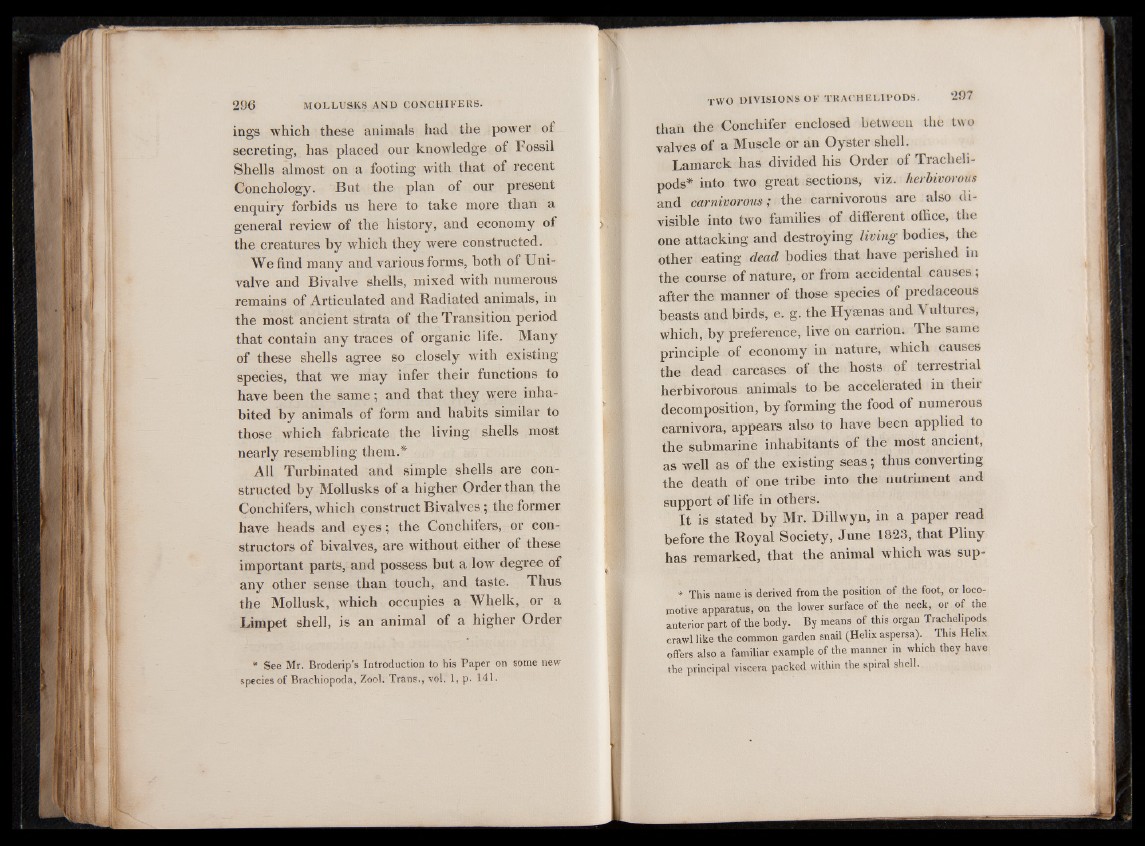
ings which these animals had the power of
secreting, has placed our knowledge of Fossil
Shells almost on a footing with that of recent
Conchology. But the plan of our present
enquiry forbids us here to take more than a
general review of the history, and economy of
the creatures by which they were constructed.
We find many and various forms, both of Univalve
and Bivalve shells, mixed with numerous
remains of Articulated and Radiated animals, in
the most ancient strata of the Transition period
that contain any traces of organic life. Many
of these shells agree so closely with existing
species, that we may infer their functions to
have been the same; and that they were inhabited
by animals of form and habits similar to
those which fabricate the living shells most
nearly resembling them.*
All Turbinated and simple shells are constructed
by Mollusks of a higher Order than the
Conchifers, which construct Bivalves ; the former
have heads and eyes; the Conchifers, or constructors
of bivalves, are without either of these
important parts, and possess but a low degree of
any other sense than touch, and taste. Thus
the Mollusk, which occupies a Whelk, or a
Limpet shell, is an animal of a higher Order
* See Mr. Broderip’s Introduction to his Paper on some new
species of Brachiopoda, Zool. Trans., vol. 1, p. 141.
than the Conchifer enclosed between the two
valves of a Muscle or an Oyster shell.
Lamarck has divided his Order of Tracheli-
pods* into two great sections, viz. herbivorous
and carnivorous; the carnivorous are also divisible
into two families of different office, the
one attacking and destroying living bodies, the
other eating dead bodies that have perished in
the course of nature, or from accidental causes;
after the manner of those species of predaceous
beasts and birds, e. g. the Hyaenas and Vultures,
which, by preference, live on carrion. The same
principle of economy in nature, which causes
the dead carcases of the hosts of terrestrial
herbivorous animals to be accelerated in their
decomposition, by forming the food of numerous
carnivora, appears also to have been applied to
the submarine inhabitants of the most ancient,
as well as of the existing seas; thus converting
the death of one tribe into the nutriment and
support of life in others.
It is stated by Mr. Dillwyn, in a paper read
before the Royal Society, June 1823, that Pliny
has remarked, that the animal which was sup-
* This name is derived from the position of the foot, or locomotive
apparatus, on the lower surface of the neck, oi of the
anterior part of the body. By means of this organ Trachelipods
crawl like the common garden snail (Helix aspersa). This Helix
offers also a familiar example of the manner in which they have
the principal viscera packed within the spiral shell.